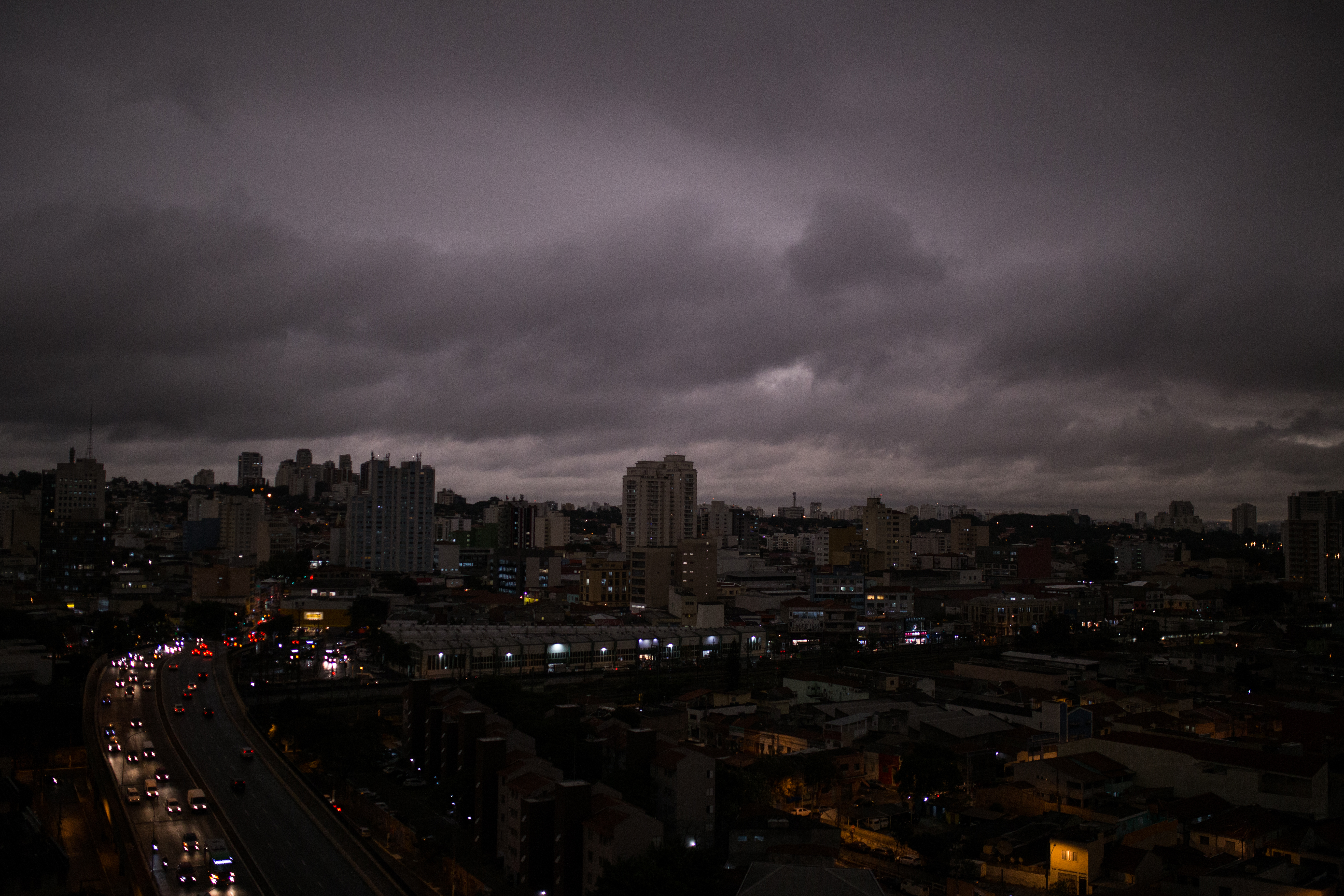- The Amazon rainforest is burning at a record rate: The Brazilian Amazon has experienced more than 74,000 fires this year, whereas last year’s total was around 40,000.
- About 10,000 of the 2019 fires have started in the past couple of weeks.
- On Monday, the smoke plume from the fires darkened the sky above São Paulo, one of Brazil’s coastal cities, which is more than 2,000 miles away from the blazes.
- Visit Business Insider’s homepage for more stories.
Starting around 3:00 p.m. local time on Monday, the skies above Brazil’s largest city went dark.
The sun in São Paulo had been eclipsed not by the moon, but by a vast cloud of smoke that choked the coastal city.
The duvet of daytime darkness was a result of the nearly 10,000 new forest fires that started across Brazil, primarily in the Amazon basin, in the past week. Many of the blazes are more than 2,000 miles away from São Paulo, but strong winds and a mass of cold air moved the grey plume of smoke across the country.
This year so far, scientists have recorded more than 74,000 fires in Brazil. That’s nearly double 2018’s total of about 40,000 fires. The surge marks an 83% increase in wildfires over the same period in 2018, Brazil’s National Institute for Space Research reported. The largest state in Brazil, Amazonas, declared a state of emergency on Monday.
Already, 2019 has the highest number of fires observed in Brazil in a single year since researchers began keeping track in 2013 - and there are still four months to go.

'It just kept getting darker and darker'
The smoke plumes from the fires raging in the Amazon initially spread from the state of Amazonas to the nearby states of Pará and Mato Grosso. Then, pushed by weather, the smoke clouds converged and drifted towards the Atlantic coast, arriving in São Paulo on Monday afternoon.
"I thought we were about to get hit with a heavy storm, but instead of raining it just kept getting darker and darker," Marcus Mendes, a Sao Paulo resident who videoed the event, told AccuWeather.

The video that Mendes shared with Accuweather showed various parts of São Paulo under the cover of darkness. After about 40 minutes, Mendes said, rain started falling and light started filtering through the gloom.
"When I posted the video online, people asked me if there had been an eclipse," he added.
Other people in São Paulo took to social media to share their photos of the skies.
🌎Just a little alert to the world: the sky randomly turned dark today in São Paulo, and meteorologists believe it’s smoke from the fires burning *thousands* of kilometers away, in Rondônia or Paraguay. Imagine how much has to be burning to create that much smoke(!). SOS🌎 pic.twitter.com/P1DrCzQO6x
— Shannon Sims (@shannongsims) August 20, 2019
One tweet from Beyond the Shadows, a democracy advocacy group in Brazil, showed cars stuck in city traffic with their headlights on. It looked like it could be 9:00 p.m. in the evening, but the image was posted at 3:37 p.m.
https://twitter.com/RobertMaguire_/status/1163775182093393920?ref_src=twsrc%5Etfw
Climatempo, a local news outlet, reported that winds pushed the smoke plumes to the southeast. The smoke then joined an existing band of fog and low-lying clouds that a mass of cold air had suspended above São Paulo.
1.2 million square miles of smoke
In total, the blazes in the Brazilian Amazon have created a layer of smoke estimated to be 1.2 million square miles wide. This image from the European Union's Copernicus Satellite shows the smoke slicing north to south through the rest of the country like a knife.
From the other side of Earth, here’s the latest on the Amazonia fires 🌳
Produced by @CopernicusEU’s atmosphere monitoring service, it shows the smoke reaching the Atlantic coast and São Paulo 🇧🇷
DATA HERE▶️https://t.co/Q6qzFdPfIT pic.twitter.com/aJKU2YwRpJ
— World Meteorological Organization (@WMO) August 20, 2019
This isn't the first time the Amazon has experienced thousands of fires simultaneously. Typically, the dry season in the rainforest runs from July to October, during which blazes can spark from natural sources like lightning. But summer is also the time of year when Brazilian farmers and loggers purposefully set fires to clear swaths of trees for industrial or agricultural use.
This year, however, warmer temperatures and drier conditions - due, in part, to climate change - have allowed both deliberate burns and blazes that crop up naturally to grow bigger than they otherwise might have.
"There are always fires this time of the year," Santiago Gassó, a NASA researcher, told news outlet UOL Noticias. "But the smoke corridor doesn't form every year."

